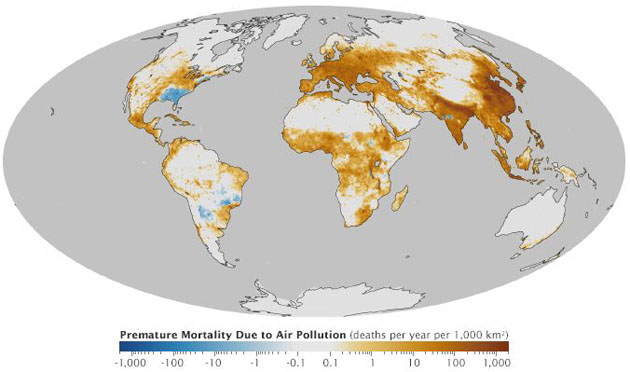
Earlier this month, environmental scientists at the University of Minnesota came out with a startling nationwide study showing that different demographic groups are exposed to drastically different amounts of air pollution each year. The study overlaid US Census data with exposure levels of a pollutant called nitrogen dioxide, or NO2, which is created by combustion in vehicles and power plants. The results: Each year, people of color are exposed to 46 percent more NO2 than white people.
NO2 is associated with increased heart disease, lung cancer, asthma, and preterm births, and is one of six “criteria pollutants” that the Environmental Protection Agency regulates in accordance with the Clean Air Act. Interestingly, the exposure gap between races was far larger than the gap between income brackets. If your household income is more than $70,000, you’re exposed to NO2 only 3 percent less than someone who lives in a household making under $20,000.
The overall NO2 levels and the disparity levels between races varied widely by city. You can see the complete breakdown here, but here’s the short list of the most polluted and most unequal cities when it comes to NO2:

Julian Marshall, the coauthor of the study, speculated that the racial disparity came largely from patterns in where people live; Americans in urban areas often cluster by race—these Wired maps show that quite clearly—and, as the evidence shows, those neighborhoods where people of color live are more likely to have higher NO2levels. Last year, a study from the Centers for Disease Control came to a similar conclusion, finding that more than 5 million people of color live within 150 meters of a major US highway.
Measuring the public health implications of the massive gap in pollution exposure is a tricky business, as so many different factors play a role in the development of any given disease. But what scientists can do is look at something called the “relative risk” of a given pollutant, which essentially tells you how much your risk of developing a certain disease increases as you’re exposed to more of that pollutant. The Minnesota team used NO2‘s relative risk as it relates to heart disease to come the conclusion in the chart above: 7,000 fewer people of color would die of heart disease each year if they were exposed to the same NO2 levels as white people. And while that statistic is striking, it’s only the tip of the iceberg: Thousands fewer people of color would experience asthma, lung disease, and preterm births if they had the same exposure levels to NO2 as white people do. If you applied the same hypothetical to other pollutants, like ozone and particulate matter, the numbers would grow even bigger.
So where is this pollution coming from? In urban areas, where air pollution levels are usually highest, the biggest culprit is transportation. Here’s a breakdown of how much air pollution (including NO2, but alsoozone, particulate matter, and carbon monoxide) different vehicle types emit in a year:

Marshall said that his team focused on NO2 in cities because it contributes to the formation of two other pollutants—ozone and particulate matter—and it’s seen as a proxy for other pollutants that come from combustion. In other words, the results are likely to hold for lots of other pollutants.















